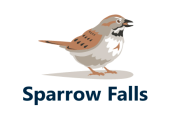
Denial
Indeed, even the most fervent flying creature sweetheart can have an adoration detest relationship with the House Sparrow. Regardless of being truly amiable flying creatures they are likewise known for pulverizing yields and a few people consider them to be bugs.
House sparrows are local to Europe and Asia yet have colonized all through the world and in the US they are known as English Sparrows to recognize them from local species. They are presently the most broadly disseminated winged creature on the planet and in the RSPB’s 2008 Big Garden Bird Watch they were the most checked British nursery fledgling.
In the eighteenth century numerous wards in Britain had “sparrow clubs” set up to demolish whatever number sparrows as would be prudent on account of their devastation to crops. Bounties kept on being paid until the nineteenth century when it was understood that the separating was not working.
Lamentably House Sparrows are presently attempting to make due alongside numerous other basic British winged animals and have declined in numbers such a lot of that they have been put on the IUCN Red List of undermined species. It is felt that absence of nourishment and appropriate home destinations is adding to the decay.
During the 1950s the UK sparrow populace was evaluated at 9.5 million which expanded to 12 million during the 1970s. The numbers began to fall during the 1990s and the populace is evaluated to remain at around 6 million at this point.
The male sparrow has a dim crown and scruff, edged with dim darker on the sides of the head and a particular dark kiddie apron. The bigger the male’s tucker, the better he is at pulling in a mate. Upper plumage is a spotted with darker, buffs and grays.
Female sparrows are a lot more blunt with brownish upper parts and a cream shaded stripe over the eye.
Sparrows are fundamentally observed in urban regions and close to arable ranches. A group of sparrows will regularly cause to notice themselves by their loud, quarreling conduct especially when battling for nourishment. They are most generally found in the south and east of the British Isles.
House sparrows breed among April and August wanting to settle in states of 10 to 20 sets. They like to settle in openings and under rooftop tiles or on the off chance that there is a lack of gaps, at that point they will assemble a home in a thick support. They lay up to 6 eggs which hatch for around 12 days. Sparrows can raise 3 or 4 broods during one reproducing season.
